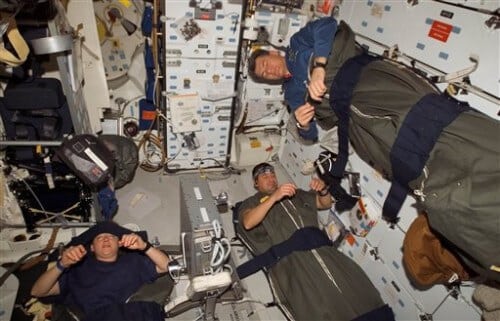The European Space Agency is planning human hibernation experiments
Can astronauts sleep for six months straight?

A state of frozen life that astronauts will enter during long space flights borrowed from science fiction movies (and first and foremost, Space Odyssey 2001. AB). However, the European Space Agency wants to make this a reality.
A team of the agency plans to conduct research on the possibility of using a hibernation-like state (winter sleep) in humans. "We are not sure if this is possible," said Marco Biggiogera, an expert on the hibernation mechanism at the University of Pavia in Italy who serves as a consultant to ESA, adding: "But the idea is not completely crazy."
The European Space Agency believes that hibernation can help astronauts cope with the psychological demands of the decades-long round trip to destinations like Saturn. And since less space and food would be needed for such a mission, the spacecraft could be lighter and more convenient to launch.
Practical hyperthermia mechanisms will be developed perhaps within a decade, says Mark Ayre of the ASA's Advanced Concepts Section. However, he and his colleagues are now examining what research will be needed to make such a system a reality.
One area of research focuses on DADLE ((D-Ala,D-Leu-enkephalin), a derivative with opium-like properties. Injection of DADLE is known to induce hibernation in squirrels during the summer, when the animal is normally supposed to be awake. It also caused For human cell cultures for sleep: the cells divided more slowly and their gene activity dropped when the molecule was added to them, Biggiogra and his colleagues write in the Journal of Clinical Investigation.
The researchers want to try DADLE in animals that are unknown in the winter, and of course start with rats. Carlo Zancanaro and his colleagues from the University of Verona, also in Italy, conducted such an experiment last month and are now analyzing the data from the sensors that monitored the animals' breathing and brain activity after they were treated with DADLE.
The researchers are also looking for additional points of origin. One of the disadvantages of hibernation is that it leads to a loss of muscle strength, a problem similar to that suffered by bedridden patients after surgery. Zancanaro pointed to the fact that these congested patients do better if they receive dobutamine, a drug used to strengthen the heart muscles, so a similar treatment might be provided during hibernation.
Biggiogra also wants to conduct research on Madagascar's dwarf spiny-tailed lemur (Cheirogaleus medius), which was revealed this year in the journal Nature as the first primate to experience hibernation.
The plan, which is due to take place over the next year, will try to explain how such studies should be developed to investigate the possibility of human hibernation. When this issue is resolved, Ira will examine the engineering side of the challenge. ASA wants to send a man on a mission to Mars in 2030, so he and his colleagues are currently building research plans so that hibernation systems can be integrated into this spacecraft. A simulation experiment will clarify how much volume and how much energy will be saved.
